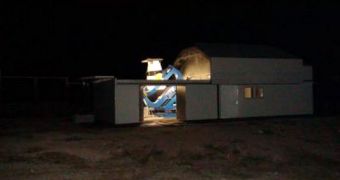Spanish researchers announce the development of a new tracking technique, that can be used to determine the motion of objects and spacecraft in geostationary Earth orbit (GEO). The method could also be used for tracking space debris, its creators explain.
The researchers who created the new approach are based at the Royal Institute and Observatory of the Navy (ROA), in Cádiz. They explain that even small telescopes could be outfitted with this capability.
This will allow them to function as space junk trackers even in areas that are not particularly dark during the night. All that is needed for the technique to work is the presence of reference stars.
Given that geostationary objects always appear to occupy the same position above Earth's surface, stars are generally used to assess the amount of motion the targets exhibit. Astronomers have been analyzing GEO objects in this manner for years.
Since the advent of modern transponders, classic astrometric techniques have been abandoned. Satellites can now relay their position via the new devices, and so mission controllers always know where their spacecraft are.
But now the problem of space debris is growing, and the old methods are starting to reenter mainstream astronomy. Many pieces of junk in orbit belong to spacecraft that did not carry active transponders when they launched, EurekAlert reports.
“Against this backdrop, we developed optical techniques to precisely observe and position GEO satellites using small and cheap telescopes, and which could be used in places that are not particularly dark, such as cities,” says Francisco Javier Montojo for SINC.
The expert, who is a member of ROA, is also the lead author of a new study detailing the technique. The work is published in the latest issue of the scientific journal Advances in Space Research.
He reveals that radar technologies can easily detect geostationary space junk at altitudes of up to 10,000 kilometers. Beyond this level, classic astrometric techniques are more efficient.
“The probability of collisions or interferences occurring between objects is no longer considered unappreciable since the first collision between two satellites on 10 February 2009 between America's Iridium33 and the Russians' Cosmos 2251,” the team writes in the journal entry.
The data the ROA team used to conduct this investigation were collected using the Fabra-ROA Telescope at Montsec (TFRM). The observatory is co-managed by the Royal Academy of Sciences and Arts of Barcelona.
“The new telescope has features that are particularly well suited to detecting space junk, and we hope that in the near future it will play an active part in international programs to produce catalogs of these kinds of orbital objects,” the team argues.

 14 DAY TRIAL //
14 DAY TRIAL //